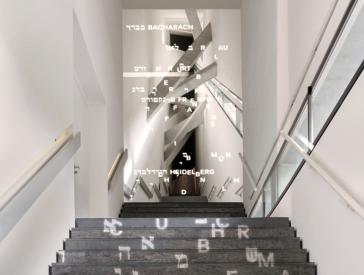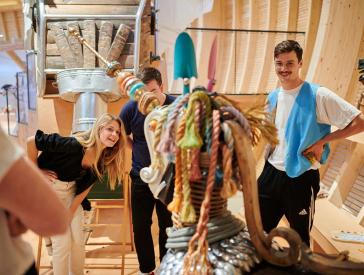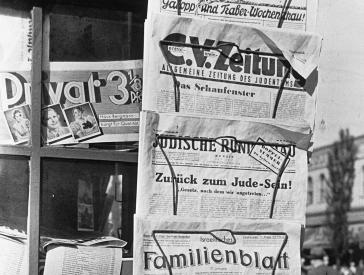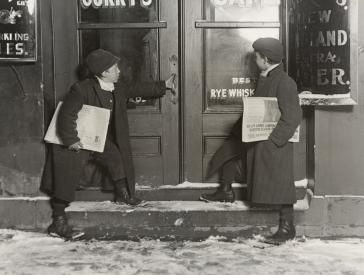"The Sukkah: A Fleeting House for a Jewish Festival"
Press Invitation to the Exhibition Opening
Press Release, Thu 21 Oct 2010
Photographs by Mimi Levy Lipis on Sukkah Architecture
A sukkah on a truck parked in front of a restaurant in Manhattan, at deserted car parks in London and Tel Aviv – booths can be found in unexpected places. In celebration of the Jewish Feast of Tabernacles, temporary dwellings are erected the world over every fall to eat, sleep, and rejoice in for one week. Between 1999 and 2009, the architect and cultural researcher Mimi Levy Lipis photographed contemporary booths erected for the Jewish Feast of Tabernacles in Europe, Israel, and the USA. The Jewish Museum Berlin is showing a selection of her photographs in the Eric F. Ross Gallery from 5 November
We cordially invite you to attend the opening of this exhibition on 4 November. We would be happy to arrange an individual exhibition preview appointment and interview with the curator at your request.
- Kontakt
-
Press office
T +49 (0)30 259 93 419
presse@jmberlin.de - Address
Jewish Museum Berlin Foundation
Lindenstraße 9–14
10969 Berlin
Opening:
- Words of Welcome: Cilly Kugelmann, program director, Jewish Museum Berlin
- The Exhibition: Mimi Levy Lipis, exhibition curator
- Transitory Architecture: Lukas Feireiss, architecture critic
| When | 4 November 2010, 7 pm |
|---|---|
| Where | Libeskind Building, ground level, Eric F. Ross Gallery |
| Admission | free |
The Exhibition "The Sukkah: A Fleeting House for a Jewish Festival"
Every fall, Jews all over the world erect booths (sukkot) to dwell in for one week. They do this in celebration of the Jewish Feast of Tabernacles that remembers on the one hand how the Israelites wandered through the wilderness and experienced feelings of homelessness and on the other the thanksgiving of a resident population. Mimi Levy Lipis photographed contemporary booths erected for the Jewish Feast of Tabernacles in Europe, Israel, and the USA over a ten-year period. The photos reflect her personal history and the search for sukkahs in different countries. They tell of the finding and also the not finding, of exploring the urban contexts.
The more than 1500-year-old construction guidelines are simple: A sukkah must have at least two and a half walls and a roof of leaves through which the stars remain visible by night and that casts a shadow on the ground by day. The sukkah offers only limited protection from the weather and today, booths are usually simple structures made of fabric, plastic sheets, or wood.
During the Feast of Tabernacles, the sukkah is to function as a permanent dwelling and the everyday residence to be seen as transitory. The sukkahs are erected in the most varied of outside spaces such as on balconies, roofs, pavements, in gardens and on the smallest of areas of remaining property. Be they of crisscross balconies in Israel or a sukkah built for eternity in Berlin, Mimi Levy Lipis’ photos show booths caught between Diaspora and home, some very basic and nearly all unusual.
A selection of around 200 photos from the more than 1,000 taken by Mimi Levy Lipis will be projected onto five screens in the exhibition. They will be shown in combination with quotations from the Bible, the Talmud, and the summary of Talmudic explanations concerned with the erection of sukkahs.
| When | 5 November 2010 to 23 January 2011 |
|---|---|
| Where | Libeskind Building, ground level, Eric F. Ross Gallery |
| Admission | with the museum ticket (5 €, reduced rate 2.50 euros) |
An illustrated volume on the exhibition is available in English:
Home is Anywhere: Jewish Culture and the Architecture of the Sukkah. Edited and Text by Mimi Levy Lipis. Verlag der Buchhandlung König. Cologne, 2010. 160 pages with 100 color illustrations. 28 €.
ISBN: 978-3-86560-914-4
Publication date: November 2010




